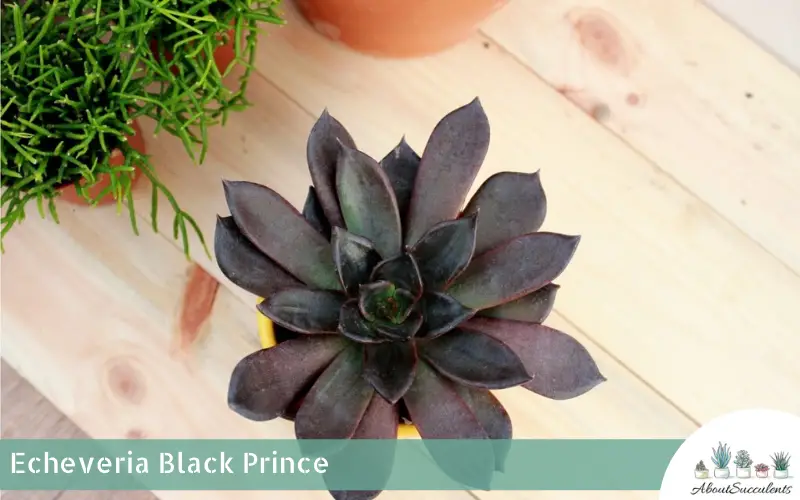
Echeveria Black Prince is an elegant succulent; its dark purple leaves give it an impression of royalty which is why it is called Black Prince. The leaves are shaded in a dark hue of purple that the color is often mistaken to be black. Echeveria Black Prince is sometimes called Black Hens and Chicks.
Another interesting feature of Black Prince is the rosette which appears tightly packed and feature stumpy, fleshy leaves and can reach 3-inches or 7.5cm across. The succulent plant is actually a cross between Echeveria shaviana and Echeveria affinis.
Black Prince can grow to a height of 6-inches or 15cm tall. It belongs to the Crassulaceae family and the succulent is native to Mexico.
General Information:
Also known as: Black Prince, Black Hens and Chicks
Plant Family: Crassulaceae
Origin: Mexico
Height: 6-inches (15cm) tall
Exposure: Partial to light sunlight
Water Needs: Water only when soil is dry to the touch, little watering during the winter months.
Soil Type: Cactus soil or potting soil mixed with coarse sand or pumice at a 1:1 ratio
Soil pH: Slightly Acidic (5.6 to 6.0 pH)
Tolerance: Drought
How to Grow and Care for Echeveria Black Prince
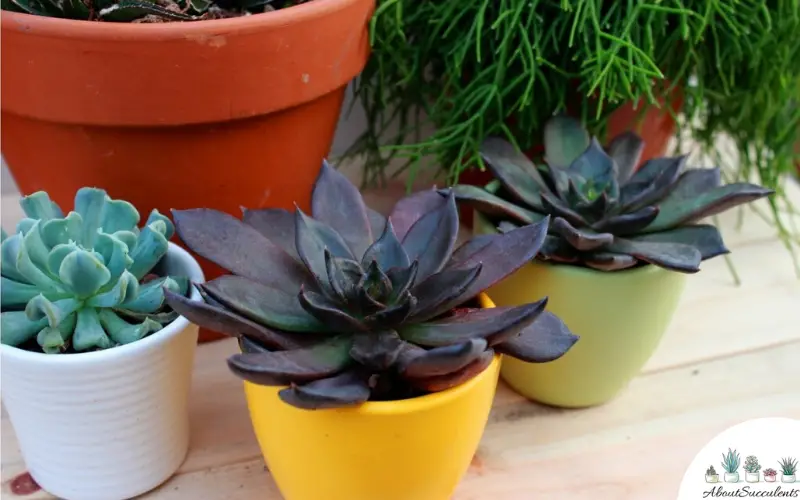
Echeveria Black Prince starts out as green then its color becomes darker as it grows. The succulent also produces offsets or “chicks” which can be used for propagation.
Black Prince succulent is very easy to grow and care for. The succulent plant will be a wonderful addition to a garden bed or a container garden.
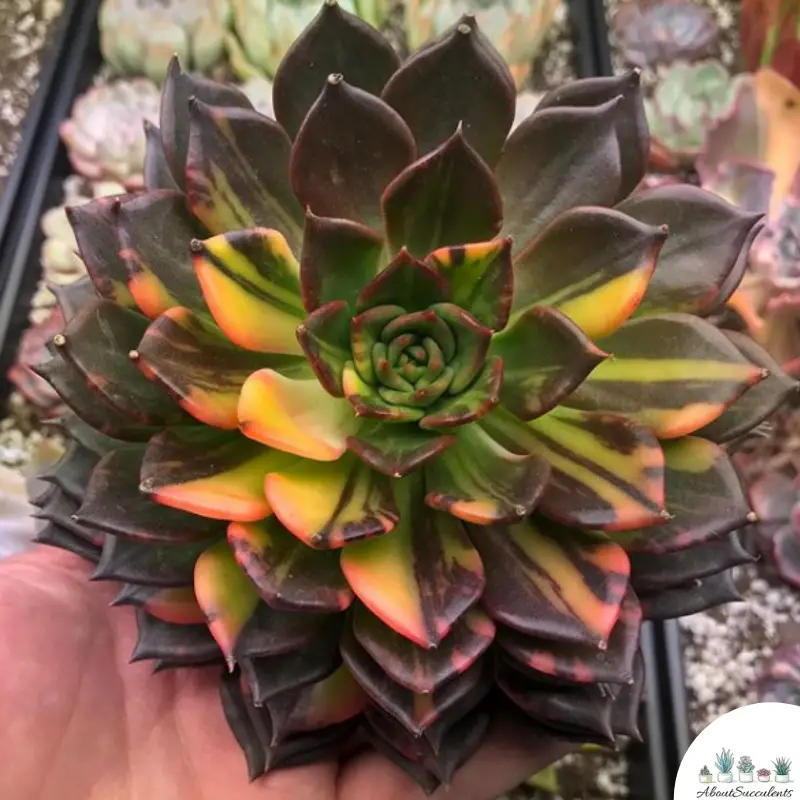
1. Sunlight
Echeveria Black Prince thrives when given full to partial sun on a regular basis. When planted outdoors, place Black Prince in an area in the garden that receives 6 hours of morning sunlight.
This is not a cold-hardy succulent and grows better in USDA hardiness zones 9 to 11. If you are growing Black Prince in a region where the temperature gets colder than 20° F (-6.7° C), it would be better to grow the succulent plant indoors.
When growing Black Prince indoors, place the plant in a location that receives a good amount of sunlight.
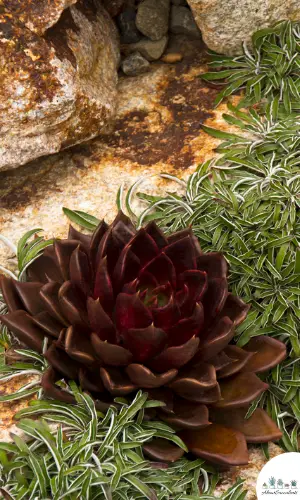
2. Watering
Echeveria Black Prince is highly tolerant of drought. Typical of plants from the Crassulaceae family, this succulent can survive long periods without water.
The best way to water Echeveria Black Prince is with the “soak and dry” method. This means you should only give the plant water when the soil is completely dry. You can assess the moisture level of the soil by touch or by inserting a stick. If the end of the stick comes out dry, it would be time to give the plant water.
Water the soil and avoid watering from the top. Do not get the leaves wet as it will place Black Prince at risk of being overwatered and succumbing to root rot.
3. Pot and Soil
For your choice of the pot, opt for one that is made of clay. The material allows the water to evaporate more freely from the soil and lower the risk of root rot.
Echeveria Black Prince will grow best in well-draining soil that has excellent aerating properties. You can use cactus soil or potting soil mixed with coarse sand or pumice at a 1:1 ratio.
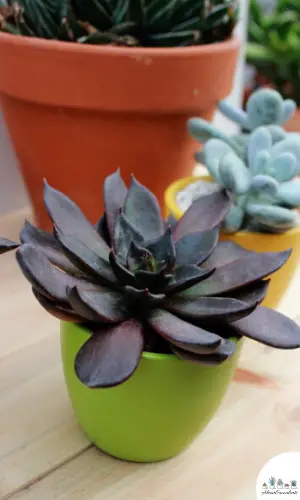
Unless Black Prince outgrows its pot, you don’t have to transfer the plant to another container.
How to Propagate Echeveria Black Prince
In addition to the offsets that Echeveria Black Prince produces, you can propagate the plant through the use of its leaves and cuttings.
Method 1 – Offsets
Step 1 – Gently pull up the small, green offsets that grow from the base of Black Prince.
Step 2 – Allow the offsets to develop calluses by leaving them in a dry area for 1 to 2 days.
Step 3 – Place the hardened offsets on well-draining soil.
Method 2 – Leaves
Step 1 – Choose a healthy leaf from the stem.
Step 2 – Gently twist the leaf from the stem by performing a clean pull. This means no part of the leaf must be left on the stem to ensure successful propagation.
Step 3 – Place the leaf in a dry area for a few days until it develops calluses.
Step 4 – Place the callused leaf on well-draining soil.
Step 5 – Water the soil whenever it has dried out completely.
Method 3 – Cuttings
Step 1 – Cut a part of the stem closest to the root of the plant. Use a sharpened and sterilized knife or a pair of garden shears.
Step 2 – Place the cutting on a dry area to allow it to harden.
Step 3 – Once the cutting has grown calluses, place it on well-draining soil.
Frequently Asked Questions
Is Echeveria Black Prince Toxic for Cats and Dogs?
Echeveria Black Prince is not included in the list of plants that are toxic to cats and dogs that appear on the website of the American Society for the Prevention of Cruelty to Animals (ASPCA).
Why is my Echeveria Black Prince Succulent Dying?
There are 2 possible causes for your Echeveria Black Prince succulent dying: Overwatering and Pest Infestation.
1. Overwatering
Overwatering is the leading cause of death for succulents. If you give Echeveria Black Prince too much water, it will cause the roots to rot and develop an infection. The infection can quickly spread to other parts of the plant.
Once you notice a discoloration in the Black Prince’s leaves or stems, cut the infected part of the plant with a sharpened and sterilized knife.
Remove the plant from the soil. Shake off excess soil and look for roots that are rotting. If you see any rotted roots, remove them right away and allow Black Prince to dry out completely.
Re-pot Echeveria Black Prince in a new container that is filled with fresh, well-draining soil.
2. Pest Infestation
Mealybugs and aphids love to drink the sap out of Echeveria Black Prince. If the succulent dries up, it will die.
You can keep pests out of the plant simply by removing dead leaves on its base. Then, spray Black Prince with neem oil.
If you see whitish, cotton-like substances on the leaves, these are by-products of the mealybugs. You can wipe these off with a cotton ball soaked in denatured alcohol.
Does Echeveria Black Prince Produce Flowers?
Yes, Echeveria Black Prince produces flowers in the late fall or early winter months. You might see stems reaching up from its center as a sign that the plant is about to bloom.
The flowers bloom in clusters and are red in color. They will thrive throughout winter.
Last Updated on June 10, 2022 by Sofia Lara